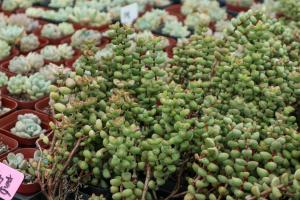How to Wash and Disinfect Plastic Planter Pots
Plastic planter pots are a popular choice for container gardening, but they can become dirty over time and harbor harmful bacteria that can harm your plants. Cleaning and disinfecting your plastic planter pots is an essential step to ensure the health and vitality of your plants. In this article, we will discuss the best way to wash and disinfect your plastic planter pots.
Step 1: Remove Dirt and Debris
The first step in cleaning your plastic planter pots is to remove any dirt, debris or old plant material that may be in them. This can be done by using a stiff-bristled brush, a soft sponge or a hose with a high-pressure nozzle. Be sure to wear gloves during this process to protect your hands from any debris that may be sharp or harmful.
Step 2: Wash with Soap and Water
After removing the dirt and debris, the next step is to wash the pots with soap and water. Fill a basin or sink with warm water and add a small amount of dish soap. Use a soft sponge or cloth to gently scrub the pots, paying particular attention to any stubborn stains or discoloration. Rinse the pots with clean water and allow them to dry completely before proceeding to the next step.
Step 3: Disinfect with a Bleach Solution
The final step in cleaning your plastic planter pots is to disinfect them with a bleach solution. This is especially important if you have had a previous infestation of pests or disease. Mix one part bleach to nine parts water in a container large enough to hold your planter pots. Soak the pots for ten to fifteen minutes, then rinse thoroughly with clean water and allow them to dry completely before planting anything in them.
Tips for Maintaining Clean Plastic Planter Pots
Once you have cleaned and disinfected your plastic planter pots, it is important to keep them that way. Regular maintenance is key to preventing the buildup of dirt, debris and harmful bacteria. Here are some tips to help you maintain clean and healthy planter pots:
Remove dead or diseased plant material promptly to prevent the spread of disease.
Clean your pots at least once a year, or more often if needed.
Use a potting mix specifically designed for container gardening to prevent compaction and ensure good drainage.
Water your plants regularly, but avoid overwatering, as this can promote the growth of mold and harmful bacteria.
Rotate your plants periodically to ensure even growth and to prevent soil-borne diseases.
In conclusion, cleaning and disinfecting your plastic planter pots is an important step in maintaining healthy and vibrant container gardens. By following these simple steps, you can ensure the long-term health and success of your plants.

 how many times do yo...
how many times do yo... how many planted tre...
how many planted tre... how many pine trees ...
how many pine trees ... how many pecan trees...
how many pecan trees... how many plants comp...
how many plants comp... how many plants can ...
how many plants can ... how many plants and ...
how many plants and ... how many pepper plan...
how many pepper plan...































